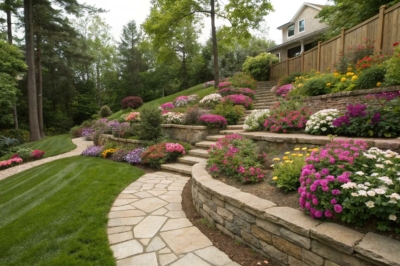1. Illuminate with Creative Lighting
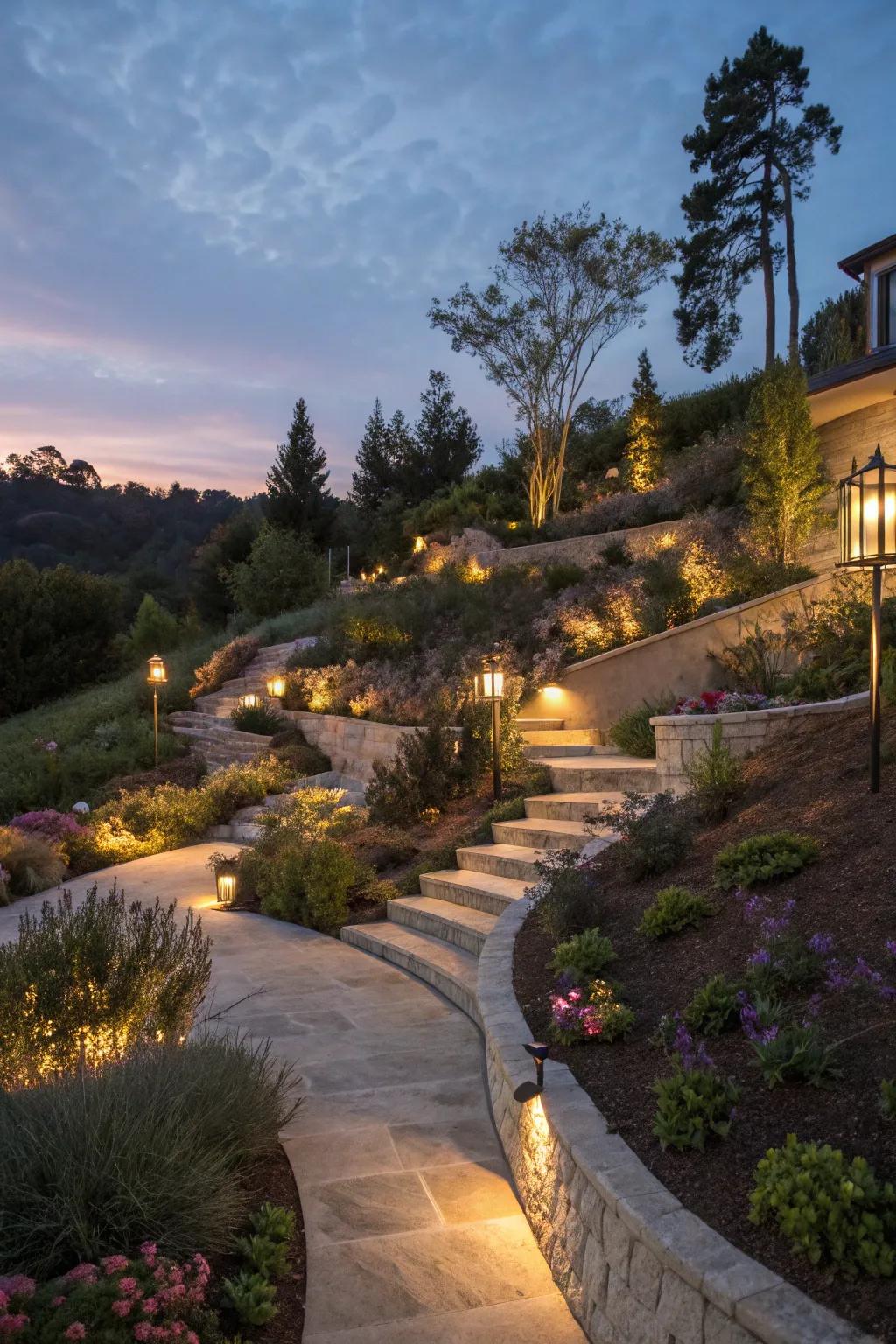
Enhance your slope’s appeal with outdoor lighting for nighttime drama. In my garden, strategically placed lights highlight pathways and features, creating a magical evening ambiance.
Check if these fit your needs:
- Solar Pathway Lights: Transform your garden with elegant solar pathway lights to enhance nighttime beauty and efficiency.
- LED Landscape Spotlights: Highlight garden features with energy-efficient LED spotlights for a captivating evening ambiance.
- Wireless Motion Sensor Lights: Add convenience and security to your garden with reliable wireless motion sensor lights.
2. Create a Tiered Planting Paradise
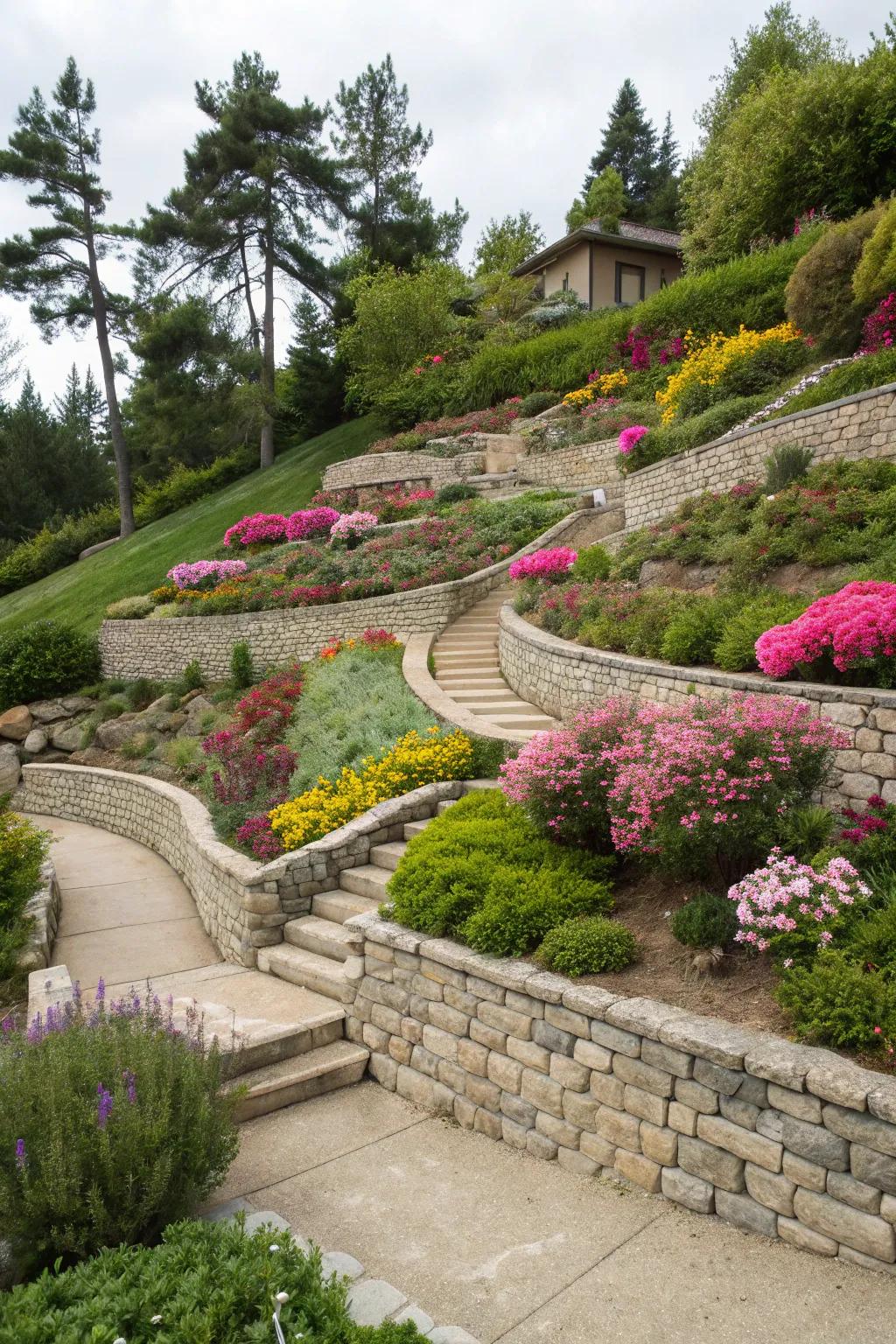
Transform your slope with tiered planting using stone or wood retaining walls to create layers of colorful flowers and lush greenery. I find this not only maximizes space but also adds a dynamic visual appeal to any garden.
Some handy options:
- Stone Retaining Wall Blocks: Use durable stone blocks to construct elegant retaining walls, enhancing your garden’s visual depth.
- Wooden Garden Edging: Incorporate stylish wooden edging for a natural, harmonious transition between planting tiers.
- Perennial Flower Mix: Plant a vibrant mix of perennial flowers to ensure continuous blooms and eye-catching colors.
3. Create Charming Pathways and Stairs
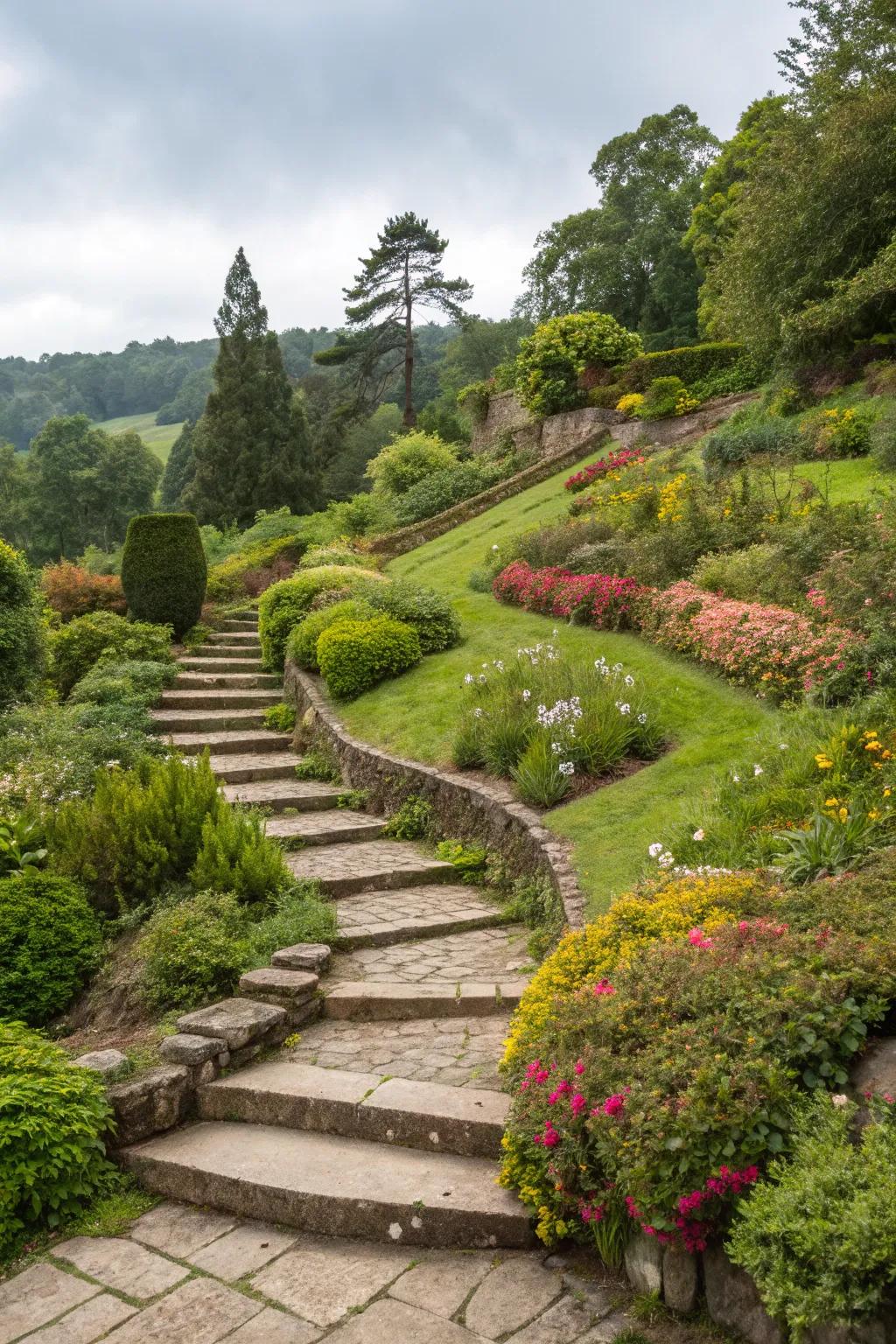
Design natural pathways and stairs to make your slope accessible and visually interesting. In my garden, stone steps provide a practical and beautiful way to navigate the terrain.
These products might help:
- Natural Stone Pavers: Enhance your garden’s beauty with durable natural stone pavers for a stunning pathway.
- Outdoor Solar Pathway Lights: Illuminate your pathways with eco-friendly solar lights for enchanting night-time visibility.
- Landscape Retaining Wall Blocks: Add structure with stylish retaining wall blocks, perfect for creating terraced garden paths.
4. Set Up a Small Vegetable Patch
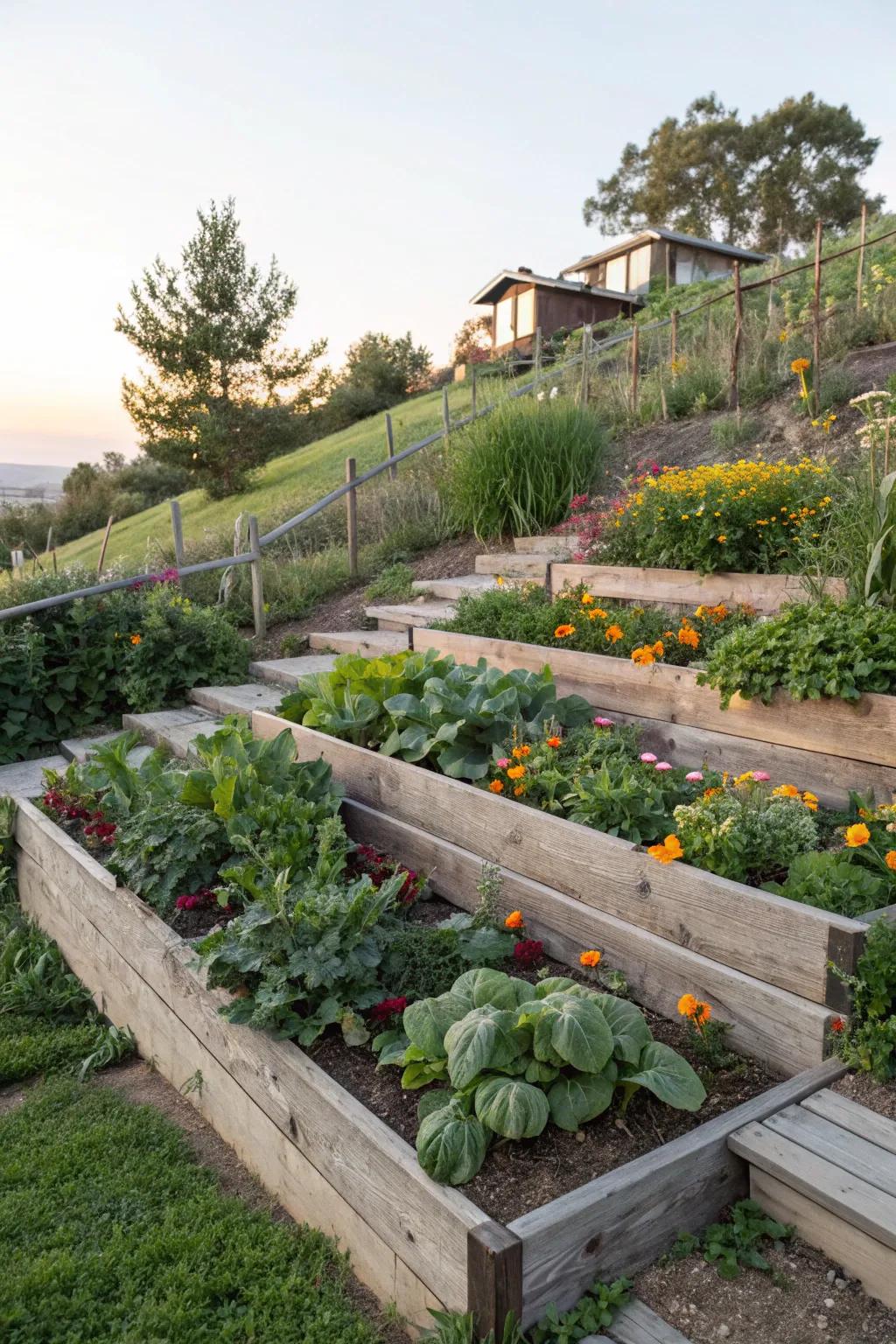
Why not use your slope for a vegetable garden? With tiered levels, you can easily grow your own produce; I’ve seen this work wonders even on steeper inclines.
Check these products out:
- Tiered Garden Bed Kit: Easily create a productive vegetable garden with this tiered garden bed kit—perfect for slopes.
- Organic Vegetable Seed Pack: Start growing your own fresh produce with this beginner-friendly organic vegetable seed pack.
- Soil pH Test Kit: Ensure optimal growth in your vegetable garden with a reliable soil pH test kit.
5. Design a Low-Maintenance Rock Garden

Use a mix of rocks and boulders to create a rock garden on your slope, offering a natural and low-maintenance solution. My clients love this option for its simplicity and the way it integrates with the natural landscape.
A few helpful options:
- Assorted Decorative Landscaping Rocks: Enhance your garden’s natural beauty with assorted decorative rocks, perfect for any outdoor setting.
- Drought-Resistant Perennial Plants: Choose drought-resistant perennials to complement your rock garden, ensuring year-round vibrant color.
- Garden Weed Barrier Fabric: Install garden weed barrier fabric to keep your rock garden low-maintenance and weed-free.
6. Add an Artistic Sculptural Element
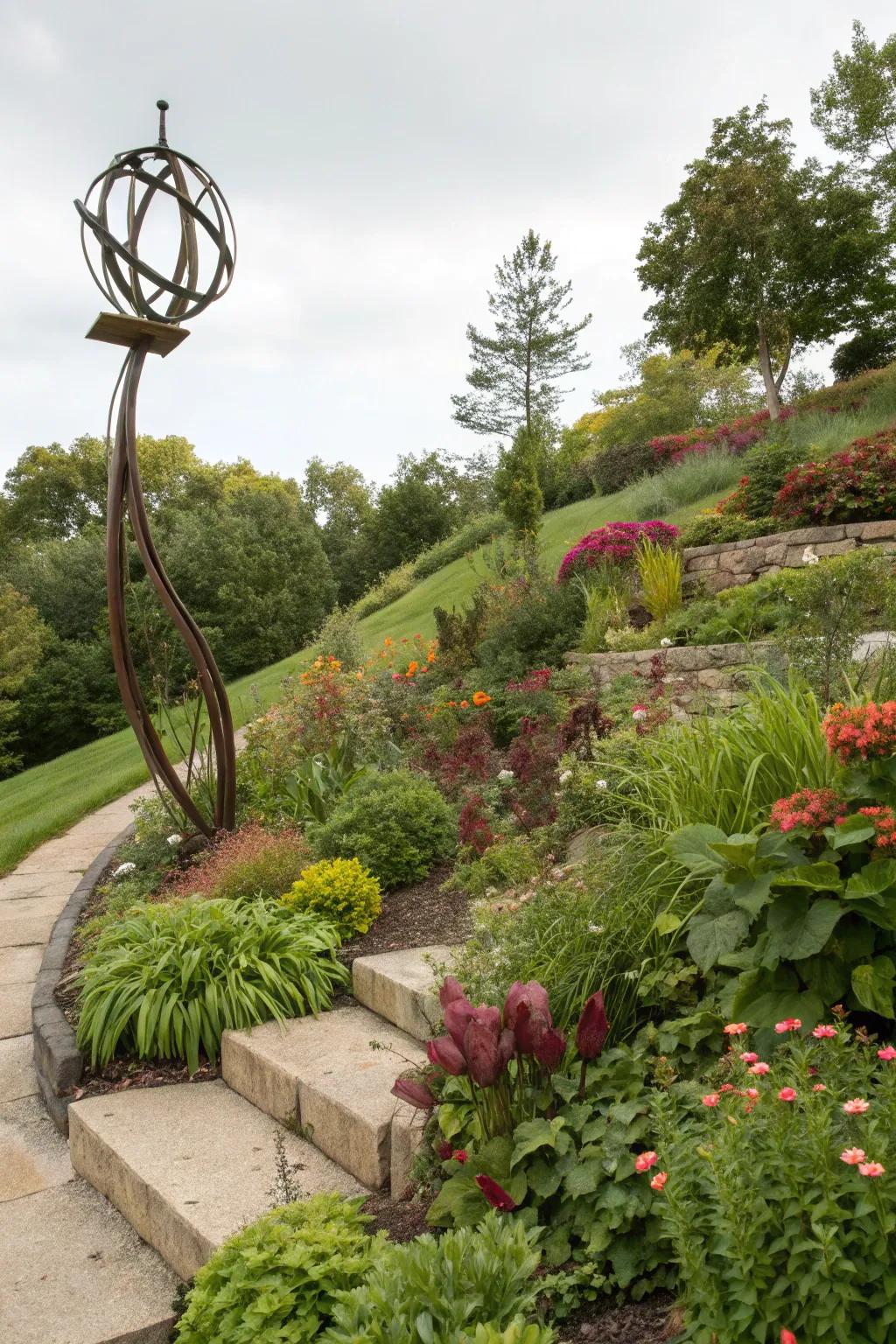
Place an artistic sculpture to serve as a focal point on your slope. In my projects, this often becomes a conversation starter and adds a touch of personality.
Try these:
- Metal Abstract Garden Sculpture: Transform your garden with this striking metal sculpture, creating an eye-catching focal point.
- Outdoor Modern Art Sculpture: Elevate your landscaping with a modern art sculpture, sparking conversation and admiration.
- Weather-Resistant Artistic Statue: Enhance outdoor spaces with a durable statue, adding personality and intrigue to your garden.
7. Utilize Natural Mulch for Simplicity
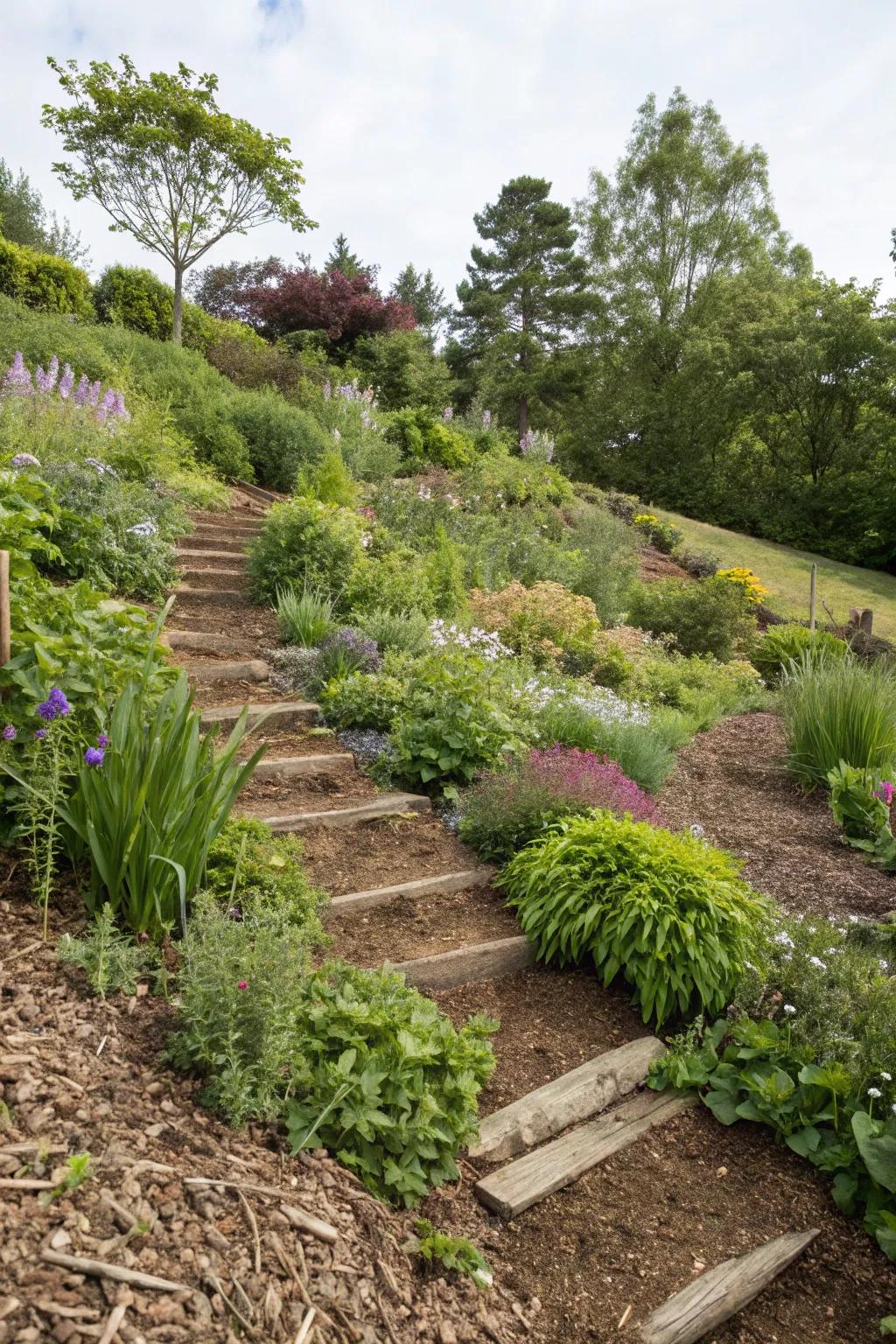
Spread natural mulch like wood chips to keep weeds at bay and retain moisture. I’ve found this to be an easy, effective solution for maintaining a healthy garden on a slope.
You might like:
- Natural Wood Chips Mulch: Protect your slope garden with natural wood chips mulch for moisture retention and weed control.
- Garden Mulch Fork: Make spreading mulch easy with a reliable garden fork designed for efficiency and ease of use.
- Landscape Fabric Underlayment: Enhance weed prevention with landscape fabric, perfect for use underneath natural mulch layers.
8. Add Texture with Ornamental Grasses
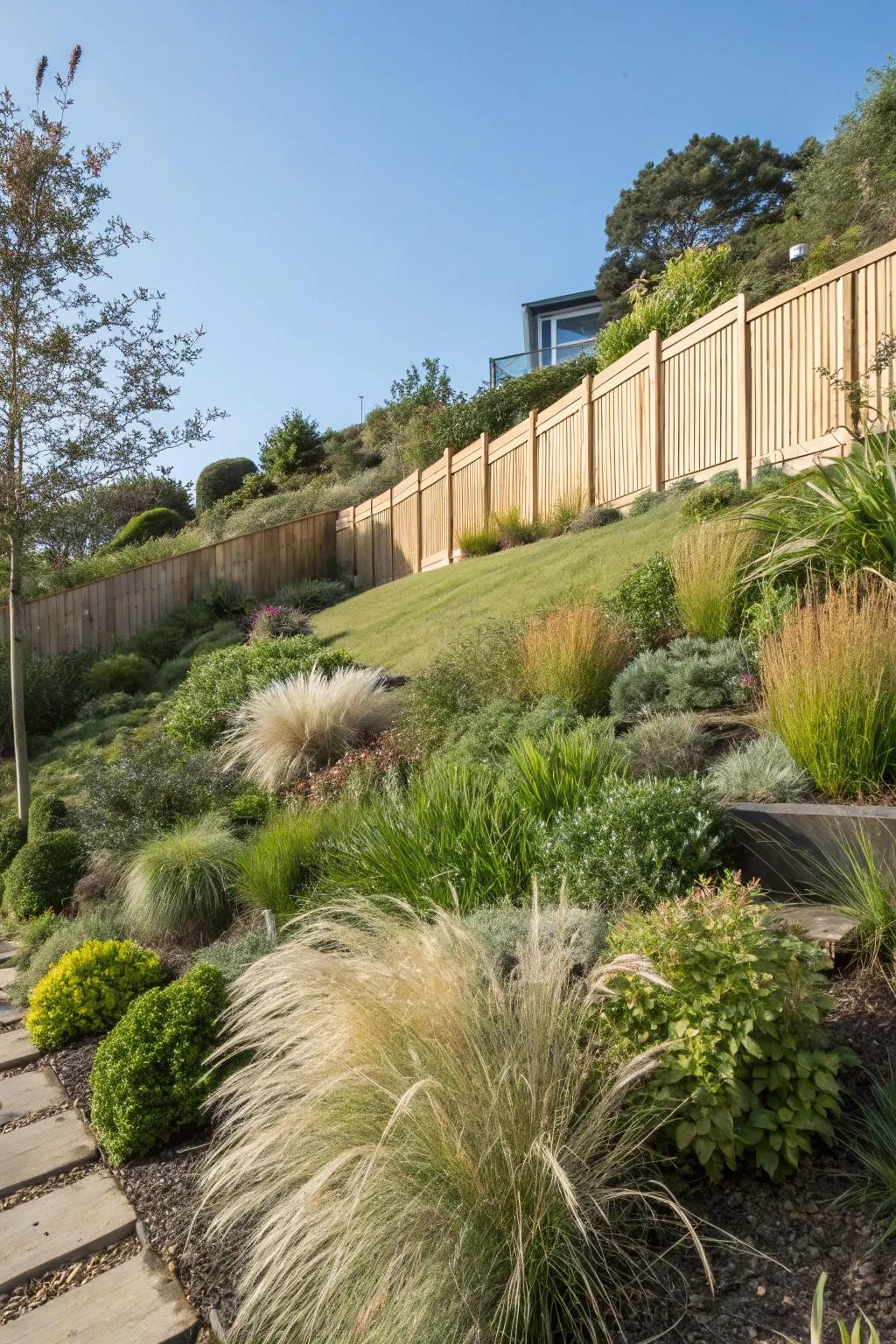
Plant ornamental grasses and shrubs to stabilize the soil and add texture to your bank. In Austin, I often use these to create a dynamic, wind-swept look that changes with the seasons.
Maybe worth checking out:
- Ornamental Grass Seed Mix: Transform your landscape with ornamental grass seeds for a dynamic, textured, and low-maintenance bank.
- Garden Soil Stabilizer: Stabilize your sloped garden effectively with this eco-friendly soil stabilizer for lasting durability.
- Decorative Garden Mulch: Enhance soil health and aesthetic with decorative mulch that complements ornamental grasses beautifully.
9. Install a Serene Waterfall Feature
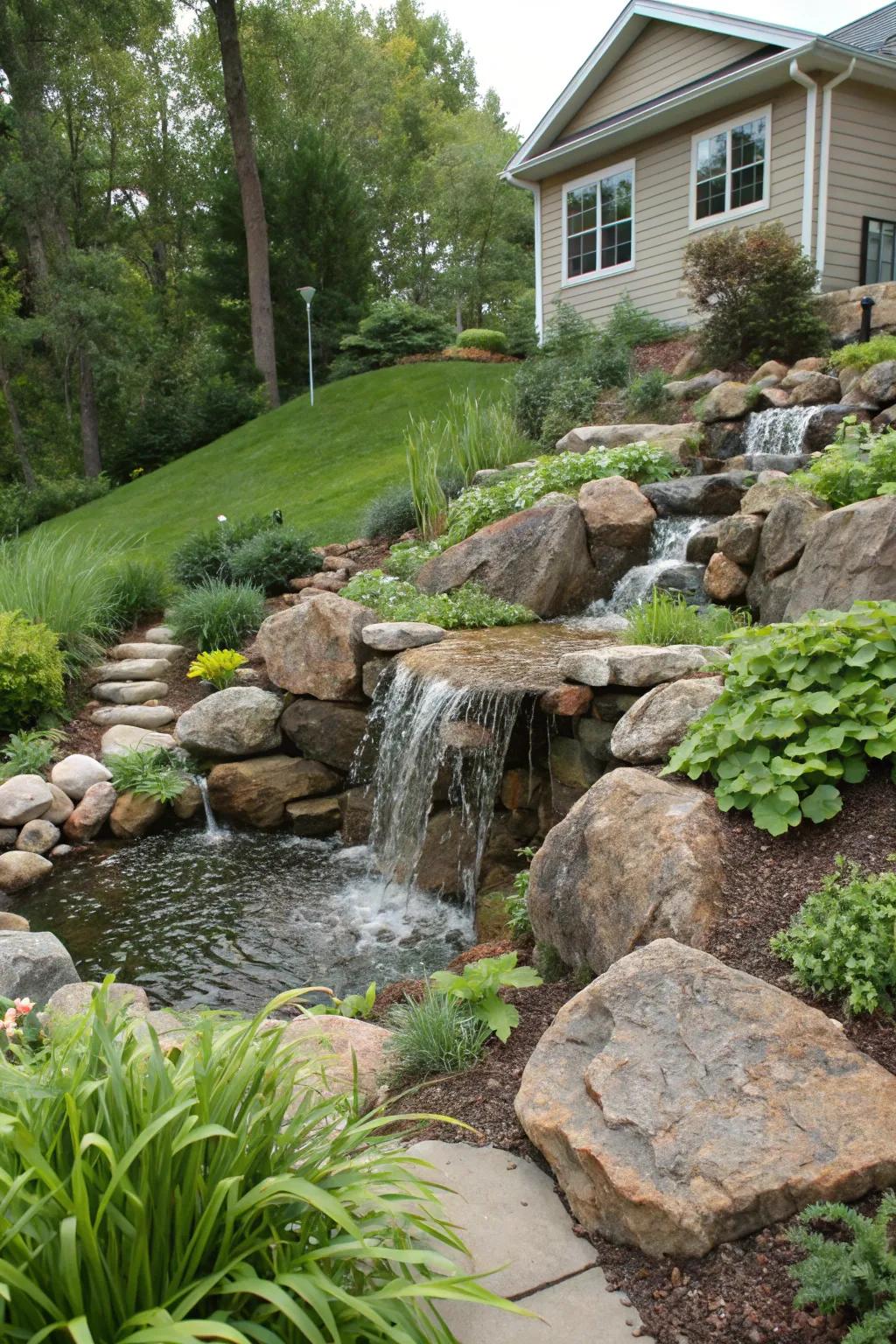
Add a sense of tranquility by incorporating a waterfall cascading down your slope. In my own backyard, the sound of water trickling over rocks creates a serene atmosphere that’s hard to beat.
A few relevant products:
- Waterfall Pump Kit: Enhance your landscape with a waterfall pump kit for seamless water flow and tranquility.
- Pond Liner: Ensure a leak-free pond with a reliable liner, perfect for creating sustainable water features.
- Outdoor LED Spotlights: Illuminate your waterfall with outdoor LED spotlights, adding a magical evening glow.
10. Embrace the Beauty of Groundcovers
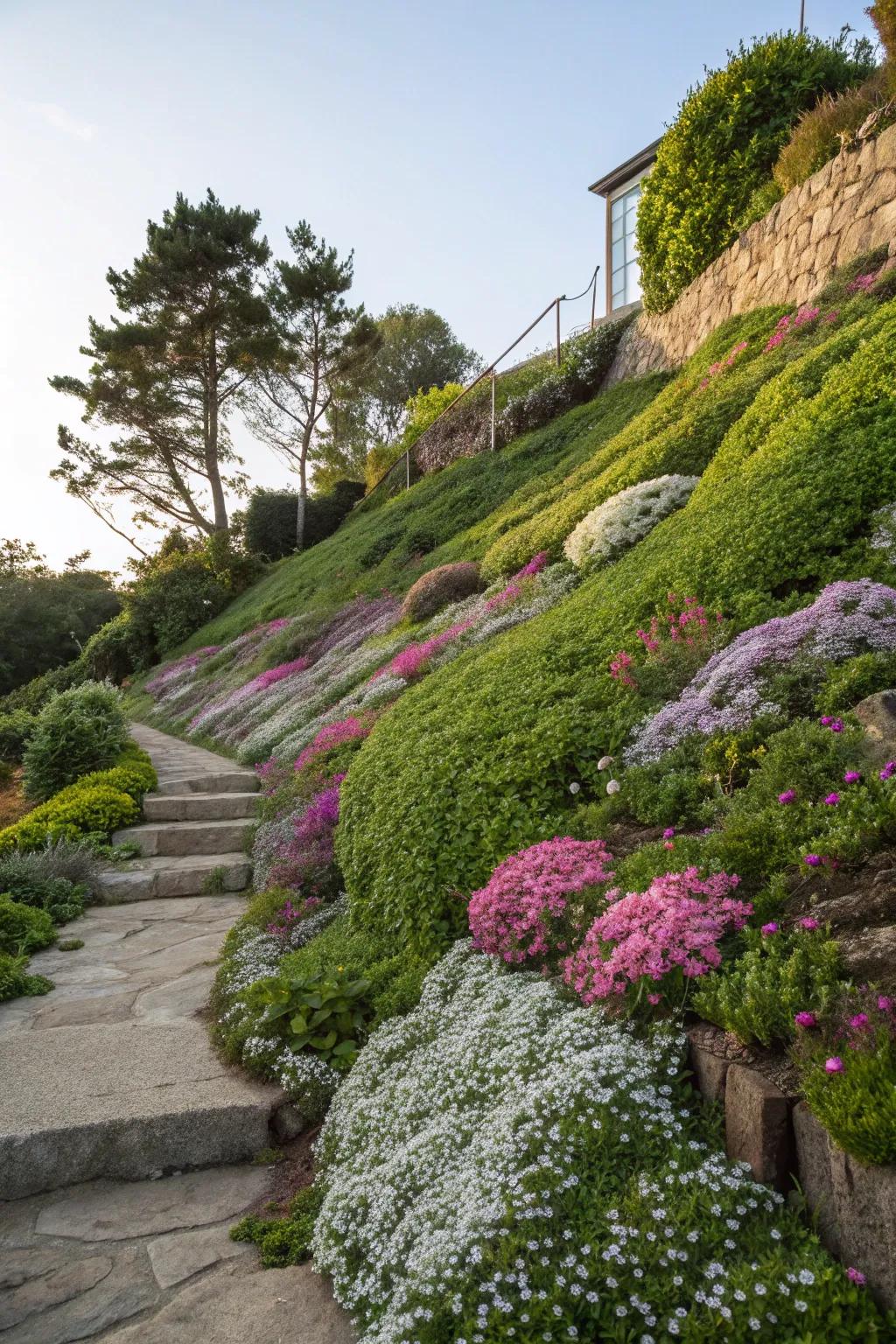
Use groundcovers like creeping thyme to stabilize the soil and reduce maintenance. I find these plants invaluable for their ability to prevent erosion while adding a lush carpet of green.
Explore these options:
- Creeping Thyme Seeds: Transform your landscape with vibrant creeping thyme seeds that enrich and stabilize your soil today.
- Groundcover Fertilizer: Boost your groundcovers’ growth with this specialized fertilizer, ensuring lush, vibrant greenery effortlessly.
- Erosion Control Fabric: Safeguard your slopes with erosion control fabric that enhances stability and encourages plant growth.
11. Install a Rustic Wooden Feature
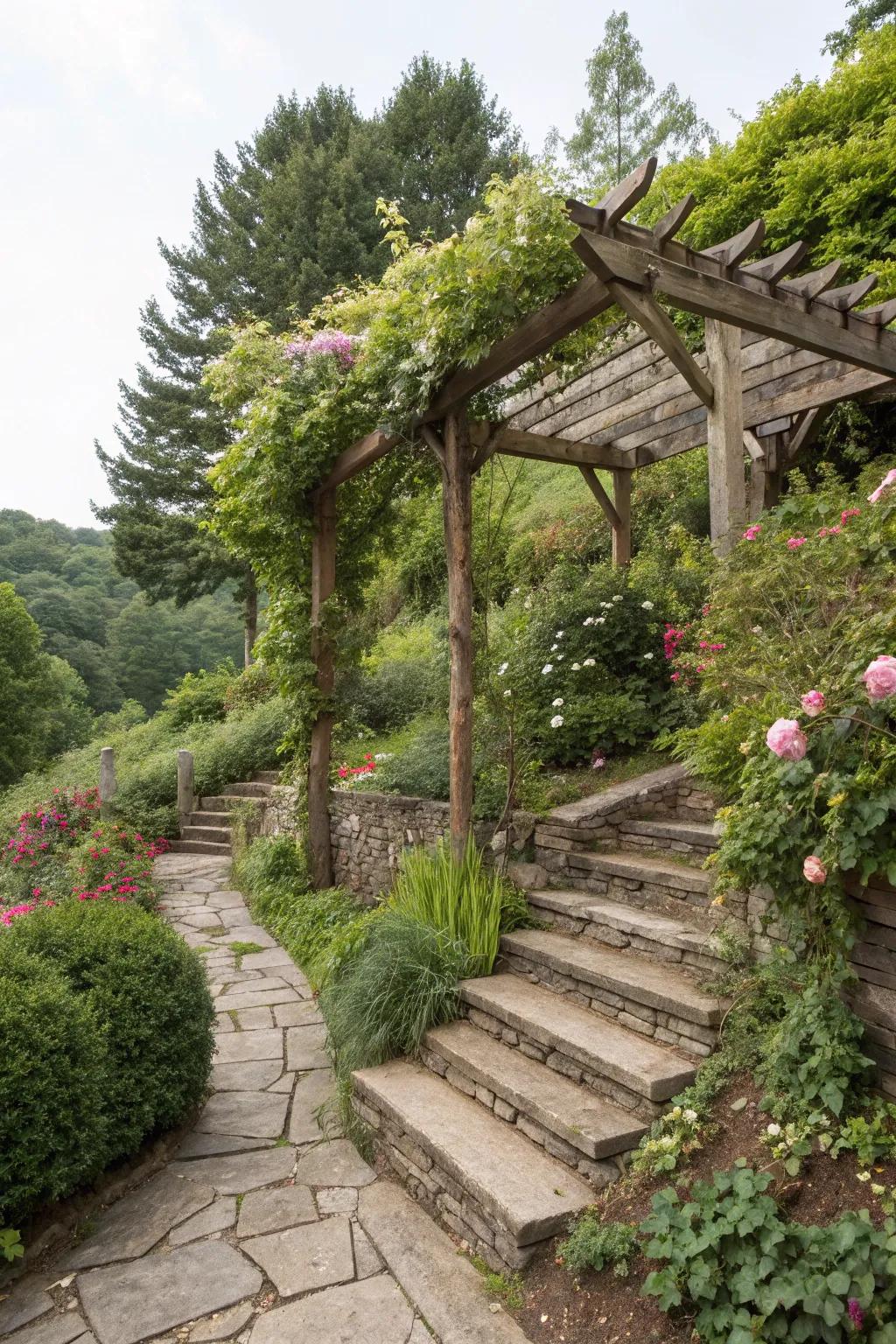
Incorporate a wooden structure such as a pergola or archway for a rustic touch. I’ve crafted these from reclaimed wood, which adds charm and character to the landscape.
Possibly handy products:
- Reclaimed Wood Pergola Kit: Enhance your garden’s charm with a rustic pergola crafted from beautiful reclaimed wood.
- Wooden Garden Archway: Add a touch of elegance to your entrance with a stunning wooden garden archway.
- Rustic Wooden Arbor: Create a welcoming focal point with a classic rustic wooden arbor for climbing plants.
12. Craft a Secret Garden Nook
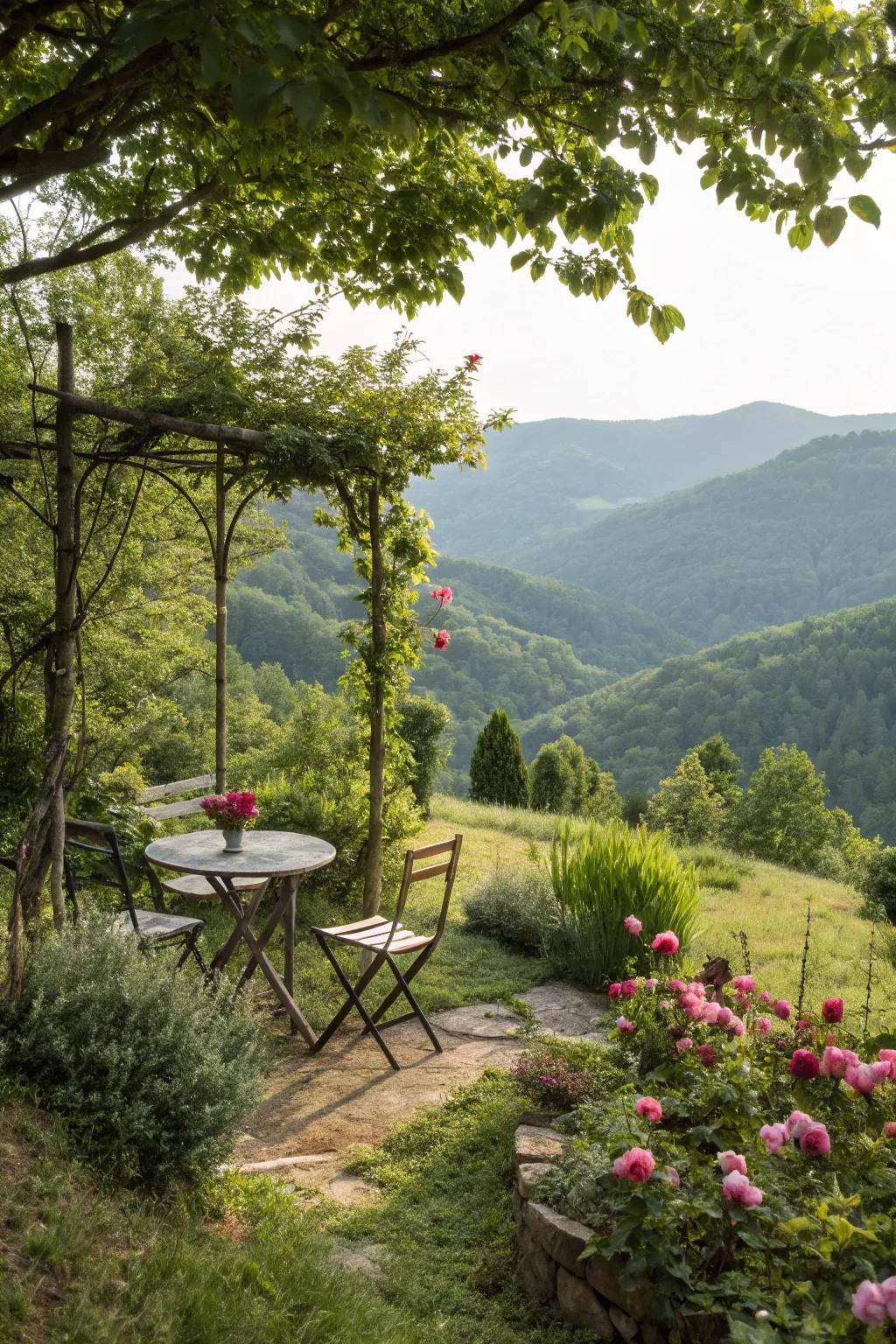
Transform a section of your slope into a hidden garden nook for a touch of magic. I often suggest this as a whimsical escape, complete with a small table and chairs for quiet moments.
Useful items to consider:
- Outdoor Bistro Table and Chairs Set: Create a cozy corner in your garden with a charming bistro table and chairs set.
- Metal Garden Arbor with Arch: Add elegance and structure with a decorative metal garden arbor, enhancing your secret garden nook.
- Solar String Fairy Lights: Illuminate your hidden garden nook with enchanting solar-powered string fairy lights for a magical ambiance.
13. Incorporate Vertical Garden Elements
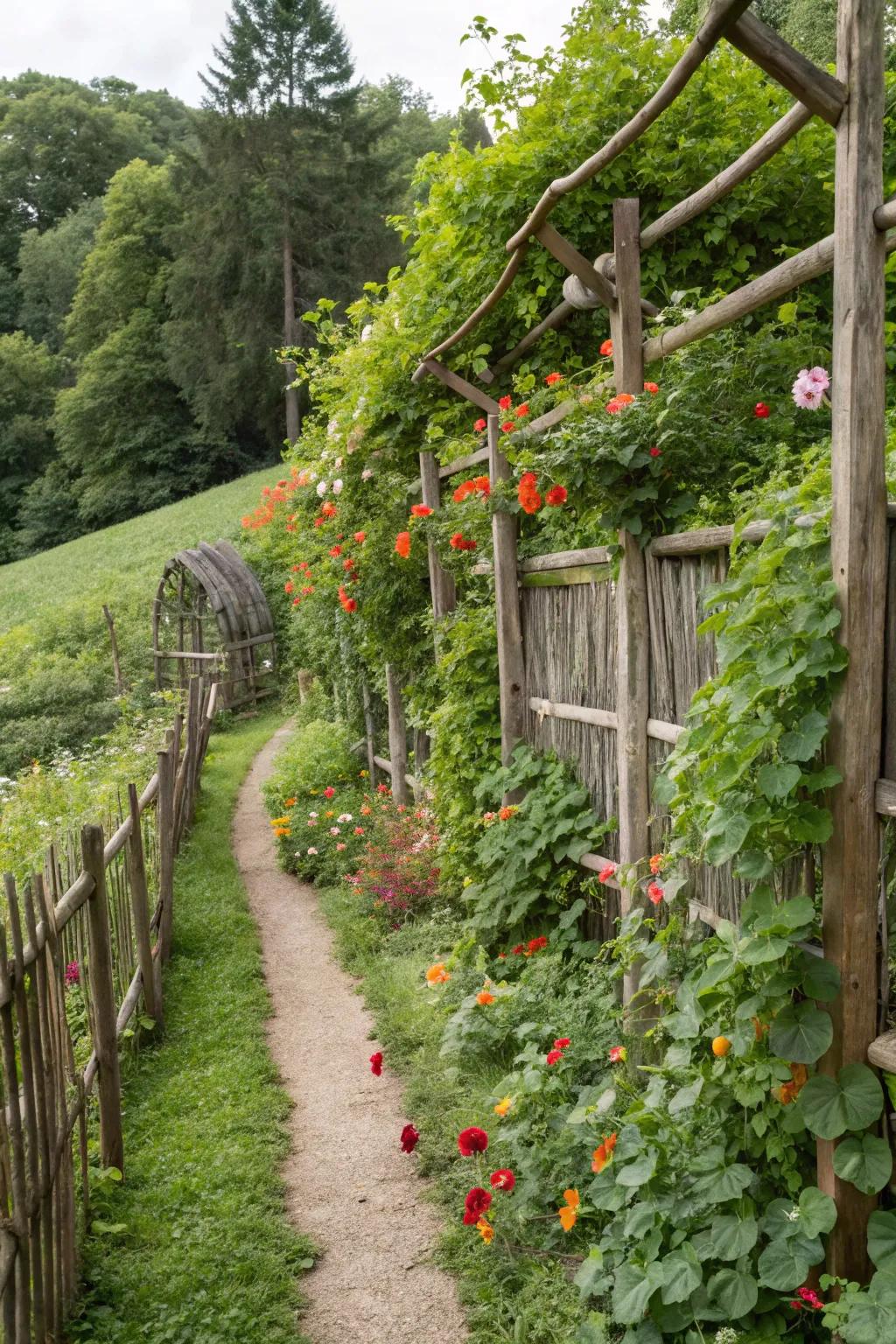
Add vertical elements like trellises or climbing plants to draw the eye upwards. This technique, which I often employ, adds height and interest to otherwise flat sections.
You might give these a try:
- Wooden Garden Trellis: Enhance your garden structure with a wooden trellis, perfect for climbing plants. Add height effortlessly.
- Climbing Plant Supports: Support your climbing plants with durable structures. Perfect for lush vertical greenery.
- Vertical Planter Wall: Transform a blank wall into a lush garden with a space-saving vertical planter.
14. Experiment with Mixed Flora
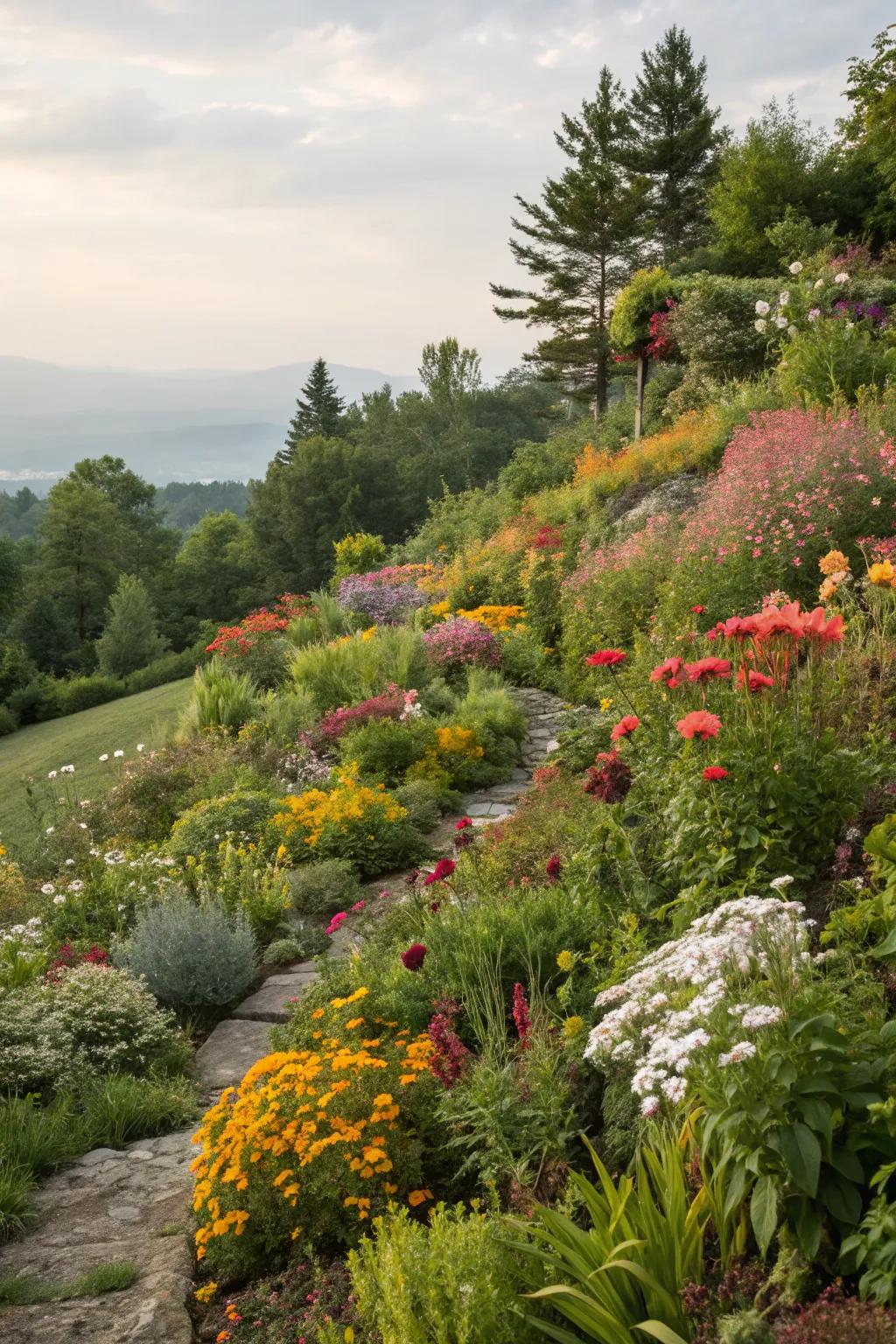
Plant a mix of flowers and plants to create a diverse floral display that offers year-round interest. I love experimenting with combinations that surprise and delight throughout the seasons.
A few things you might like:
- Perennial Flower Seed Mix: Discover a colorful array of flowers that will bloom season after season in your garden.
- Natural Stone Edging: Enhance your garden’s visual appeal with stylish and durable natural stone edging.
- Multi-Purpose Gardening Soil: Provide essential nutrients to your plants with this high-quality, versatile gardening soil.
15. Incorporate Edible Landscaping
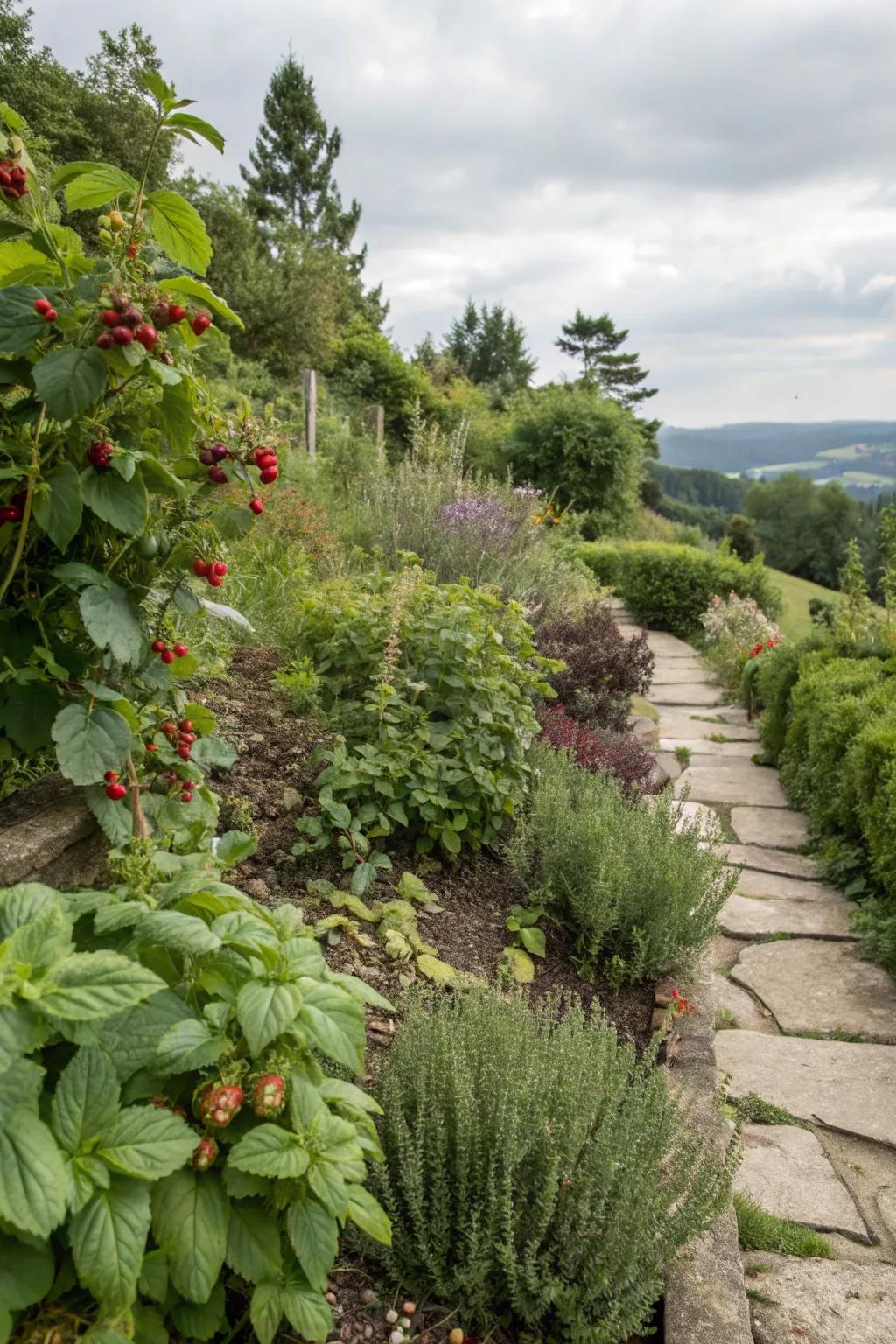
Blend edible plants like herbs and berry bushes into your slope design. In my garden, this adds both beauty and delicious rewards throughout the year.
Items that may come in handy:
- Herb Garden Starter Kit: Grow your own herbs effortlessly with this complete starter kit for year-round freshness.
- Berry Bush Seedlings: Enhance your garden’s visual appeal and enjoy fresh berries with easy-to-plant berry bushes.
- Vertical Garden Planter: Save space and grow more with a versatile vertical garden planter for herbs and berries.
16. Install a Cozy Seating Area

Add a bench or a small seating area where you can sit and enjoy your landscaped bank. In my experience, a well-placed seat turns any garden into a personal retreat.
Consider these options:
- Wooden Garden Bench: Enhance your garden with a classic wooden bench for ultimate relaxation and scenic enjoyment.
- Outdoor Waterproof Cushions: Add comfort to your seating area with durable waterproof cushions designed for outdoor use.
- Solar Garden Lights: Illuminate your pathway with eco-friendly solar lights, creating a magical ambiance in the evening.
17. Create a Wildlife-Friendly Habitat
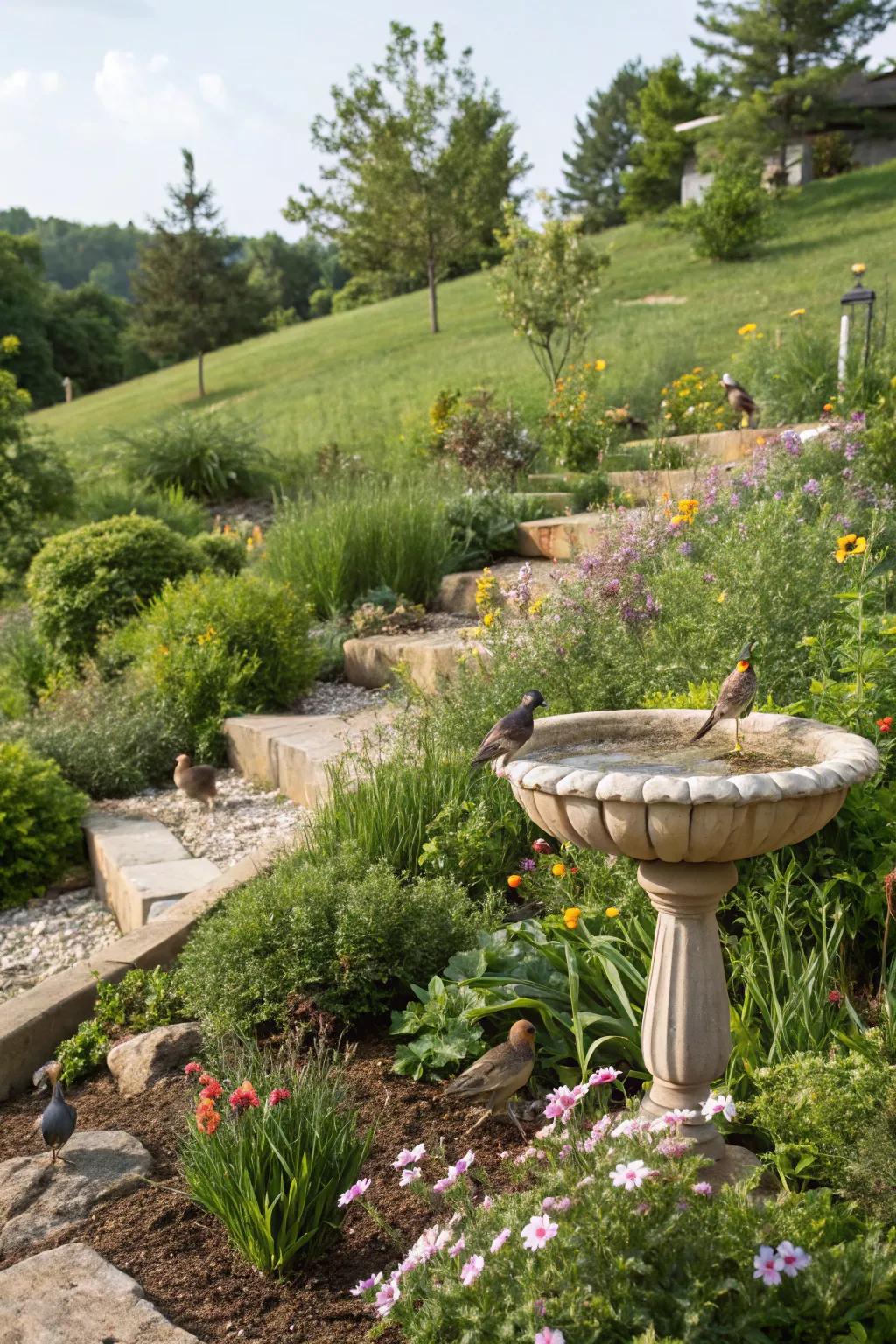
Plant native species that attract wildlife, turning your slope into a haven for birds and butterflies. I find this approach not only beautiful but also rewarding for nature lovers.
Give these a look:
- Native Wildflower Seed Mix: Attract butterflies and birds by planting native wildflowers; enhance your garden’s beauty naturally.
- Decorative Bird Bath: Invite more birds to your garden with a charming bird bath; enjoy watching them flock daily.
- Butterfly House: Provide shelter for butterflies in your garden; support their life cycle and boost biodiversity.
18. Embrace a Wildflower Meadow
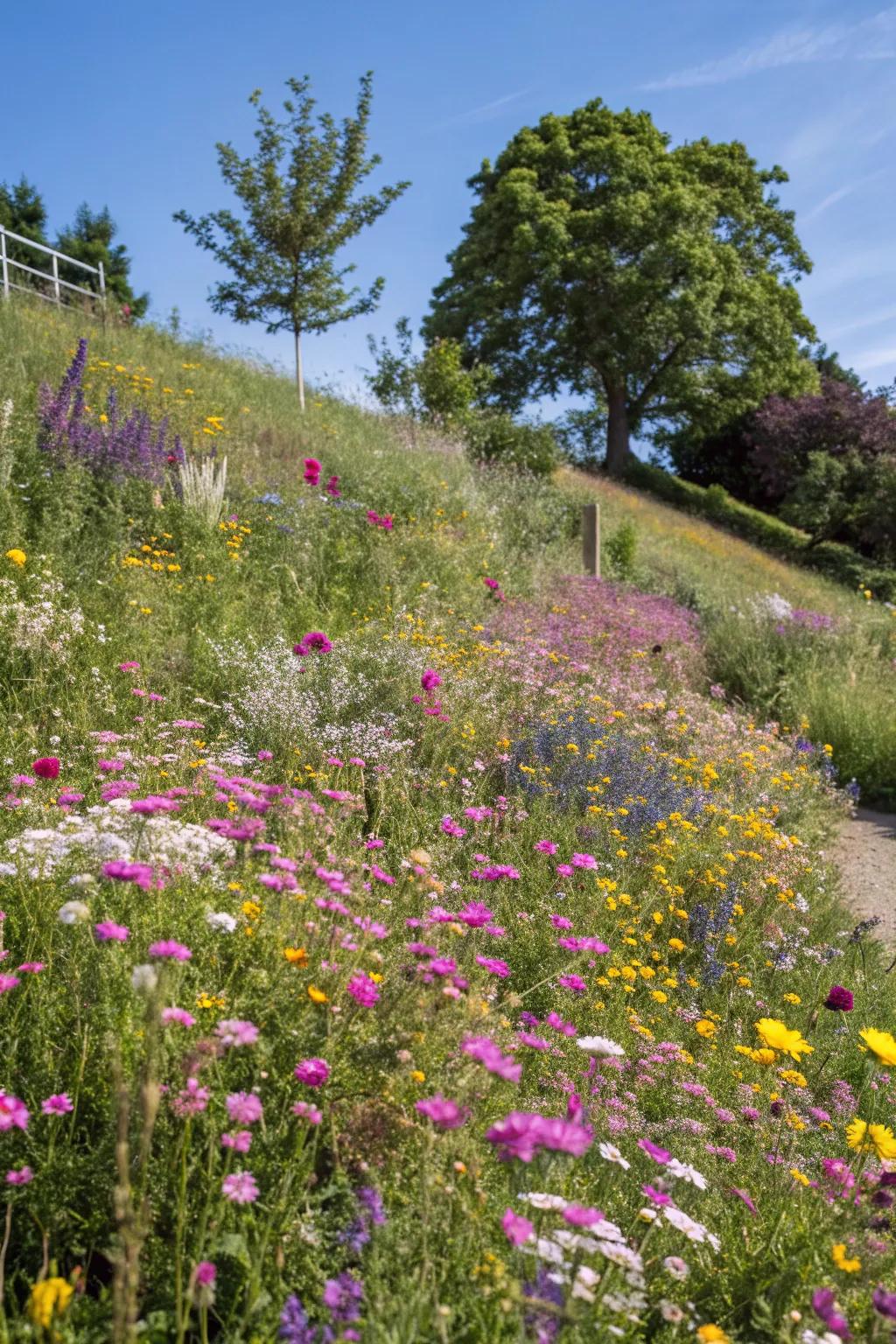
Sow a wildflower meadow for a burst of color and a touch of wilderness. I love how it transforms a slope into a vibrant, ever-changing canvas.
A few suggestions:
- Wildflower Seed Mix: Transform your garden with a vibrant wildflower seed mix, perfect for stunning seasonal blooms.
- Garden Soil Conditioner: Enhance soil health and fertility with this conditioner, nurturing your wildflowers to flourish beautifully.
- Automatic Garden Watering System: Keep your wildflower meadow hydrated effortlessly with an automatic watering system, ensuring lush growth.
19. Introduce a Zen-Inspired Retreat
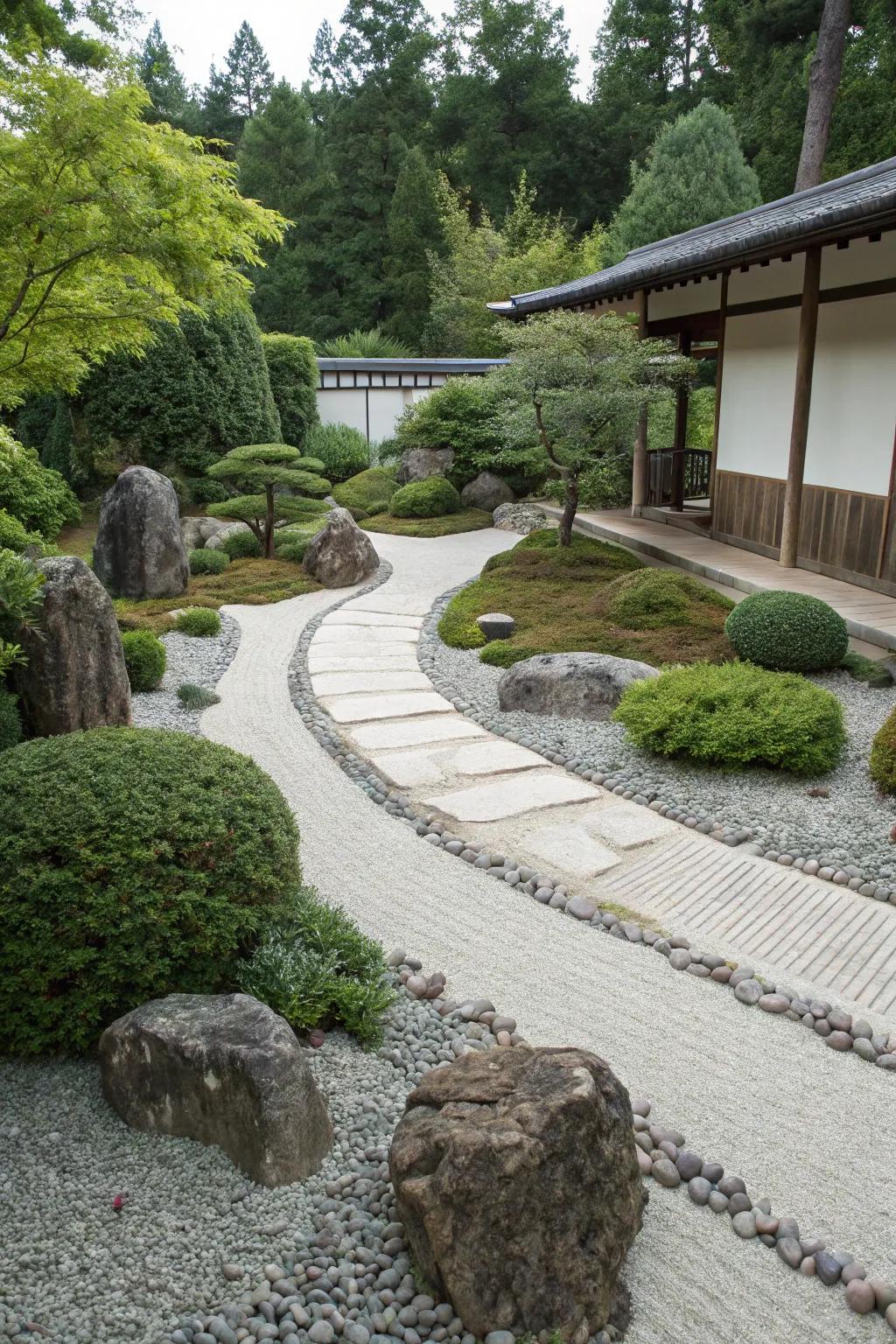
Create a Zen garden on your slope with gravel, stones, and minimalistic plantings. I love the calm and simplicity this style brings to any outdoor space.
Possibly helpful picks:
- Zen Garden Gravel: Enhance tranquility in your garden with fine gravel for an authentic Zen ambiance.
- Japanese Stone Lantern: Add charm and light to your Zen garden with a traditional Japanese stone lantern.
- Bonsai Tree Set: Cultivate peace and beauty with a bonsai tree, perfect for a minimalist garden feel.
